chris-z-2135-46-blog
56 posts
Latest Posts by chris-z-2135-46-blog

Nebula Images: http://nebulaimages.com/
Astronomy articles: http://astronomyisawesome.com/

Apollo’s Wardrobe - Houston, Texas - 1978
via reddit

18420 second exposures stacked to give whirling effect
js


New view of the Pillars of Creation
js
Who’s coming to Mars 🚀

One of 7 ways a trip to Mars could kill you
1) Your rocket could blow up before leaving Earth
Elon Musk’s plan to go to Mars involves strapping a giant spaceship atop the biggest rocket that humanity has ever built. Because any rocket launch basically involves a long, controlled explosion, it’s inherently precarious — no matter how many safety tests are done beforehand. If anything goes wrong, if the explosion gets out of control, the people strapped to that big container of fuel don’t stand a chance.
For context, NASA’s space shuttle program carried 833 passengers between 1981 and 2011. Of those, 14 people died in explosions on two high-profile accidents (Challenger and Columbia), a fatality rate of 1.6 percent. That’s vastly more dangerous than driving and a bit riskier than climbing Mount Everest. (The fatality rate for the Apollo program to the moon was even higher, at 9 percent.)
But, of course, SpaceX would be using newer, more complex, and yet-untested rockets to get to Mars. So it’s tough to say what the actual odds of death would be. Possibly much higher! Note that a couple of SpaceX’s smaller Falcon 9 rockets have either exploded on the launchpad or blown up mid-flight. Engineers and rocket scientists can improve that, but it’s unlikely that the risk will be zero.
Thanksgiving...in Space
Since 2000, humans have continuously lived and worked on the International Space Station. That means plenty of crew members have celebrated holidays off the Earth.

Although they’re observing the same holidays, they do so in a slightly different way because of the unique environment 250 miles above the Earth.
Consider the differences of living on Earth and in space…

Food scientists must develop foods that will be easier to handle and consume in an environment without gravity. The food must not require refrigeration and also provide the nutrition humans need to remain healthy.

Freeze drying food allows it to remain stable at room temperature, while also significantly reducing its weight.

Did you know that all the food sent to the space station is precooked? Sending precooked food means that it requires no refrigeration and is either ready to eat or can be prepared by simply adding water or by heating.

The only exception are the fruit and vegetables stowed in the fresh food locker. The food comes in either freeze-dried containers or thermostabilized pouches. If freeze-dried in a vacuum sealed package, the astronauts have a rehydration system in-flight, which they use restore moisture in their food. If thermostabilized, the packaging is designed to preserve the food similar to canned products, but instead in a flexible, multi-layered pouch.
So what will the space station crew eat this year (2016) for Thanksgiving?
Turkey
Cherry/Blueberry Cobbler
Candied Yams
Rehydratable Cornbread Dressing
Rehydratable Green Beans and Mushrooms
Rehydratable Mashed Potatoes
What are you bringing to Thanksgiving on Earth this year? Treat your family and friends astronaut-style with this cornbread dressing recipe straight out of our Space Food Systems Laboratory…no freeze drying required!

For spaceflight preparation:
Baked dressing is transferred to metal tray and freeze-dried accordingly. One serving of cornbread dressing shall weigh approximately 145 g prior to freeze-drying and 50 g after freeze-drying.
Learn more about our Food Systems Laboratory in this Facebook Live video: https://www.facebook.com/ISS/videos/1359709837395277/
Happy Thanksgiving!
Make sure to follow us on Tumblr for your regular dose of space: http://nasa.tumblr.com
How Will We Safely Send the First Humans to the Red Planet?
We’ve been exploring the Red Planet for over 50 years – Mariner 4 launched on this day (Nov. 28) in 1964 and took the first photos of Mars from space the following summer.

We first explored the surface 40 years ago (Viking, 1976) and have had a continuous scientific presence on Mars for nearly 20 years, starting with the landing of the Pathfinder lander and Sojourner rover on July 4, 1997.
We currently have three orbiters – MAVEN, MRO and Mars Odyssey – and two rovers – Curiosity and Opportunity – actively exploring Mars.
These robotic explorers have already taught us a lot about the Red Planet, and future missions will teach us even more about how humans can live and work on the surface.

After sending humans on space exploration missions for the last 50 years, we have gained the experience and knowledge to send the first people to Mars. We are working across all areas to prepare for that historic day and want to share our progress with you.
Building the ride to Mars: NASA’s Space Launch System.
Our ride to Mars, the Space Launch System, is being built right now to meet the challenges of exploring deep space. When it comes to our journey to Mars and beyond, there are no small steps. Our video series by the same name breaks down those steps to show how SLS will send missions to the Red Planet.

Living on the Space Station will help humans live safely on Mars.
New crew members of Expedition 50 will soon conduct more than 250 experiments on the International Space Station. More than 2,000 experiments have already been done!
Experiments in fields such as biology, Earth science, physical sciences and human research are helping us unlock the knowledge needed to enable humans to live in space for long durations. If you missed the recent launch, check out NASA TV for a replay.

Testing Orion helps crew live and work in space and get home safely.
Scheduled to launch atop the Space Launch System rocket for the first time in 2018, an uncrewed Orion will travel farther into space than any spacecraft built for humans has ever gone before. When Orion returns to Earth, splashing down into the Pacific Ocean, it will take a landing and recovery group to safely return the capsule and crew back to land. A variety of testing on the ground, including to structures and parachutes, is helping make sure Orion can safely carry crew to new destinations in the solar system.

In late October, this recovery group, including NASA’s Ground Systems Development and Operations Program, the U.S. Navy, U.S. Air Force and contractor employees, completed its fifth successful practice run to recover Orion aboard the USS San Diego.

We’re using high resolution imagery from the Mars Reconnaissance Orbiter to learn more about potential landing sites for a human mission.
Who knows what surprises the Red Planet holds?
Our Curiosity Rover has discovered all kinds of interesting Mars features including meteorites. How do you learn more about a meteorite? Zap it with lasers, of course.

This golf-ball-sized, iron-nickel meteorite was recently found on Mars where ancient lakebed environments once existed. Named “Egg Rock” for the area in which it was found, it is the first meteorite to be examined using a laser-firing spectrometer.
By studying the conditions on Mars with vehicles like Curiosity, scientists are able to help prepare future astronauts to live on Mars.
How do you prepare the tallest rocket ever built for its first launch?
Another important component in successfully launching the Space Launch System rocket and Orion spacecraft on a Journey to Mars is the infrastructure work being done by our Ground Systems Development and Operations Program at Kennedy Space Center.

While efforts at our Vehicle Assembly Building continue, we hope you’ll be making your plans to join us at the launch pad for the first flight of SLS with Orion in 2018!
Preparing for a human journey to Mars
The next Mars rover will launch in 2020, and will investigate a region of Mars where the ancient environment may have been favorable for microbial life, probing the Martian rocks for evidence of past life.

It will collect samples and cache them on the surface for potential return to Earth by a future mission. Mars 2020 will also conduct the first investigation into the usability and availability of Martian resources, including oxygen, in preparation for human missions.
Make sure to follow us on Tumblr for your regular dose of space: http://nasa.tumblr.com


Centaurus A
js


Trillions and Trillions
As far as astronomers know, this universe of ours is nearly 14 billion years old and 93 billion light-years across. Only objects between 10 to 12 billion light-years distant will ever be visible due to the expansion of the universe.
Recently, a new survey upped the believed galactic population from around 100 billion to TWO TRILLION.
Images: Left: NGC 1365 Credit: Jason Jennings Right: Hubble Deep Field added to the background of NGC 1365 Credit: NASA/ESA

Astronaut Alan L. Bean, Lunar Module pilot for the Apollo 12 lunar landing mission, holds a container filled with lunar soil collected while exploring the lunar surface. Astronaut Charles “Pete” Conrad Jr., commander, who took this picture, is reflected in the helmet visor.
Credits: NASA

Milky Way At Kilbear Provincial Park, Canada
js

Pepacton Reservoir is one of the darkest areas of the tri-state area. By contrast the city is serves is one of the brightest; New York.
js

Thunderstorms as seen from the ISS
js

Atacama Desert


“Whipple theory of formation of solar system.” World Geo-graphic Atlas, A Composite of Man’s Environment. Geography, Geology, Demography, Astronomy, Climatology, Economics. 1953. David Rumsey Historical Map Collection.



Took these pictures in astronomy lab tonight!









Terraforming Mars
Hat’s off to SpaceX for releasing footage of their attempt to safely land their first stage on a barge so they could reuse it. The fact that they hit a barge in the middle of the ocean at all is pretty incredible. Their ultimate goal is to soft land it so they can reuse their rocket engines. Of course, the engines would have to be refurbished between every shot, but this could end up being an incredible cost savings for low earth orbit resupply missions. When you watch this video, don’t think about how much money this cost to not work…. but how much future savings something like this could represent!
https://vine.co/v/OjqeYWWpVWK




SpaceX Lands the Falcon9 First Stage - A revolution in Rocket Science and Engineering
Today, at 8:33, Spacex made history. They landed the first stage of their Falcon9 rocket after having it successfully deploy a second stage into low earth orbit.
The Video is here:
Unlike other rocket companies, Spacex in not making small hops - they did that 2 years ago with their grasshopper rocket. In fact, this is how they tested the initial avionics systems that would be able to land the rocket in a stable position autonomously. Here is some footage:
Unlike the companies that make these hops, Spacex has to use this stage to help get payloads into low earth orbit… and then recover it! This is incredibly difficult and requires an advanced retro-thrusting maneuver that has never been successful - until now! The diagram below shows this thrusting maneuver, which happens shortly after the second stage has decoupled and ignited.

Spacex claims that this is similar to throwing a pencil over the Empire State Building, then having it flip perfectly, then haveing it fall into a shoebox… easy enough right?

Only, in real life SpaceX isn’t shooting a pencil… they are shooting a rocket! This is the pad that the now famous falcon9 rocket landed on:

Now you might ask, why does this matter? This means space will become cheaper! We can already build satellites that are less than $10,000, as a matter of fact I’m building a small satellite with a team right now! As it currently stands, space travel is too expensive for creative people to take risks. Now, thanks to SpaceX, we may be mining or visiting asteroids, visiting the moon, visiting mars, or doing something crazier - and we may be doing this very soon! The Falcon9 rocket costs $54 million to build but only $200,000 to refuel… let’s put this in perspective… That’s the same amount that it costs to refuel a Boeing 747 (which is the airplane that consumers use to fly around the world). This means that space travel could be as cheap as air travel very soon! Way to go SpaceX!
If you want to watch the full launch and landing video check it out here (this may be moved in the future): http://www.spacex.com/webcast/

Credit: SpaceX




If at first you don’t succeed…
SpaceX lands its “reusable” rocket on an ocean barge FOR THE FIRST TIME EVER.
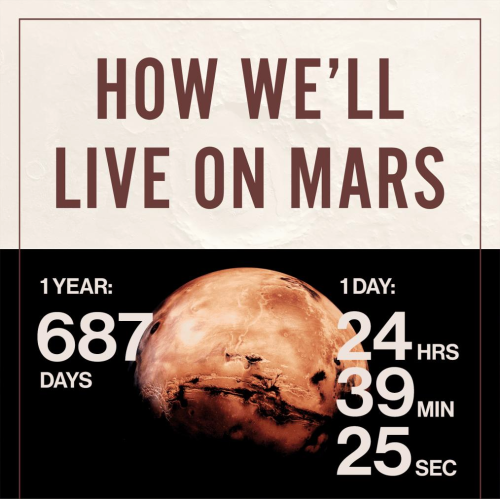
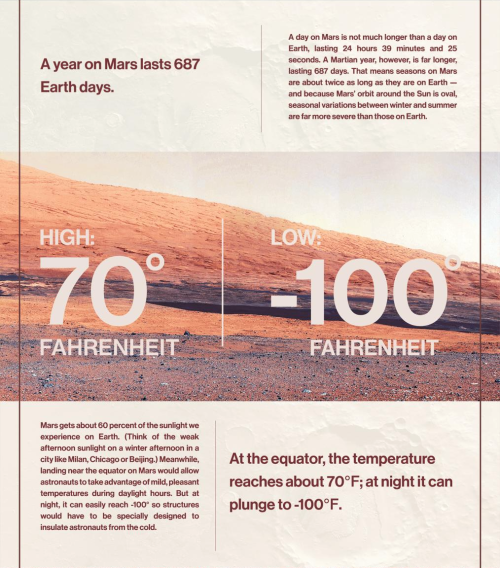
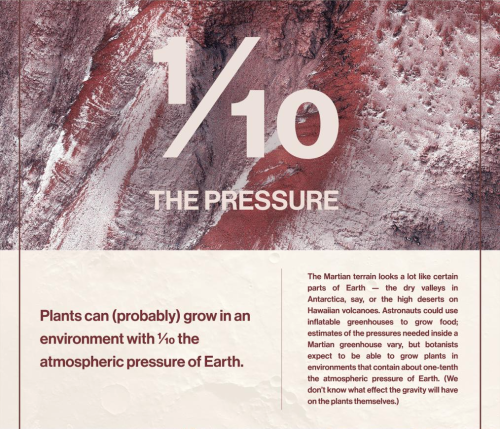
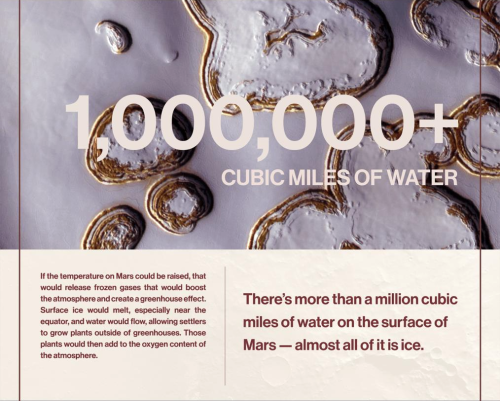
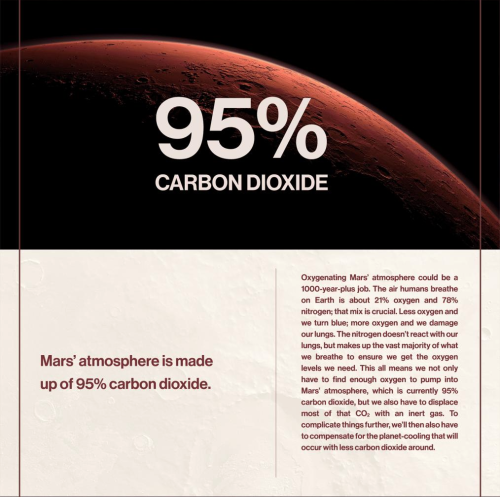
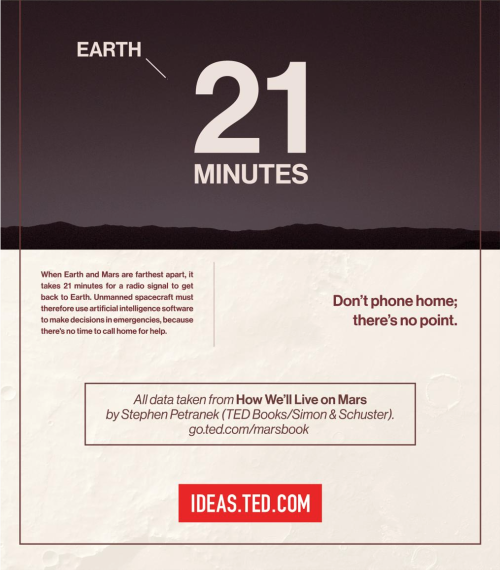
Life on Mars

First look at the system SpaceX plans to use to get to Mars
Elon Musk is sharing his vision for making humans a…

What would it really take to colonize a planet? Especially one that’s less habitable than Skellium…
Why Sequencing DNA in Space is a Big Deal
… And How You Can Talk to the Scientists Who Made It Happen

Less than one month ago, DNA had never been sequenced in space. As of today, more than one billion base pairs of DNA have been sequenced aboard the International Space Station, Earth’s only orbiting laboratory. The ability to sequence the DNA of living organisms in space opens a whole new world of scientific and medical possibilities. Scientists consider it a game changer.

NASA astronaut Kate Rubins, who has a background in genomics, conducted the sequencing on the space station as part of the Biomolecule Sequencer investigation. A small, commercial, off-the-shelf device called MinION (min-EYE-ON), manufactured by Oxford Nanopore Technologies in the UK, was used to sequence the DNA of bacteria, a virus and rodents. Human DNA was not sequenced, and there are no immediate plans to sequence human DNA in space.

(Image Credit: Oxford Nanopore Technologies)
The MinION is about the size of a candy bar, and plugs into a laptop or tablet via USB connection, which also provides power to the device. The tiny, plug and play sequencer is diminutive compared to the large microwave-sized sequencers used on Earth, and uses much less power. Unlike other terrestrial instruments whose sequencing run times can take days, this device’s data is available in near real time; analysis can begin within 10-15 minutes from the application of the sample.

Having real-time analysis capabilities aboard the space station could allow crews to identify microbes, diagnose infectious disease and collect genomic and genetic data concerning crew health, without having to wait long periods of time to return samples to Earth and await ground-based analysis.
The first DNA sequencing was conducted on Aug. 26, and on Sept. 14, Rubins and the team of scientists back at NASA’s Johnson Space Center in Houston hit the one-billionth-base-pairs-of-DNA-sequenced mark.

Have more questions about how the Biomolecule Sequencer works, or how it could benefit Earth or further space exploration? Ask the team of scientists behind the investigation, who will be available for questions during a Reddit Ask Me Anything on /r/science on Wednesday, Sept. 28 at 2 p.m. EDT.
The participants are:
Dr. Aaron Burton, NASA Johnson Space Center, Planetary Scientist and Principal Investigator
Dr. Sarah Castro-Wallace, NASA Johnson Space Center, Microbiologist and Project Manager
Dr. David J. Smith, NASA Ames Research Center, Microbiologist
Dr. Mark Lupisella, NASA Goddard Space Flight Center, Systems Engineer
Dr. Jason P. Dworkin, NASA Goddard Space Flight Center, Astrobiologist
Dr. Christopher E. Mason, Weill Cornell Medicine Dept. of Physiology and Biophysics, Associate Professor
What’s Up for October 2016?
What’s Up for October? Moon phases, Astronomy Day, meteors and Saturn!

The new moon phase starts the month on October 1. Of course, the new moon isn’t visible, because it’s between Earth and the sun, and the unlit side is facing Earth.

Night by night the slender crescent gets bigger and higher in the sky and easier to see just after sunset. On the 3rd and 4th, the moon will pass just above Venus!

A week later on the 9th the moon has traveled through one quarter of its 29-day orbit around Earth, and we see the first quarter phase. Also look for Mars just below the moon.

Join us in celebrating International Observe the Moon Night Saturday, October 8th, with your local astronomy club or science center. Conveniently, the 8th is also Fall Astronomy Day, celebrated internationally by astronomy clubs since 1973.

One week later on the 16th the moon reaches opposition, or the full moon phase, when the moon and the sun are on opposite sides of Earth. And the sun completely illuminates the moon as seen from Earth.

During this phase, the moon rises in the east just as the sun is setting in the west. Overnight, the moon crosses the sky and sets at dawn.

A week later, on the 22nd of October, the last quarter moon rises at midnight. Later, the pretty and bright Beehive Cluster will be visible near the moon until dawn.

To wrap up the month, 29 days after the last new moon we start the lunar cycle all over again with another new moon phase on October 30th. Will you be able to spot the one-day old moon on Halloween? It will be a challenge!

There are three meteor showers in October–the Draconids, the Taurids and the Orionids. Try for the Draconids on October 8th.

See the Taurids on October 10th.

The Orionids will be marred by the full moon on the 21st, but all three meteor showers will offer some possible bright meteors.

Finally, you’ll have an especially pretty view of Saturn, when it forms a straight line with Venus and the red star Antares on the 27th.
You can catch up on NASA’s lunar mission, the Lunar Reconnaissance Orbiter, the Cassini Mission to Saturn and all of our missions at www.nasa.gov.
Watch the full October “What’s Up" video for more:
Make sure to follow us on Tumblr for your regular dose of space: http://nasa.tumblr.com.